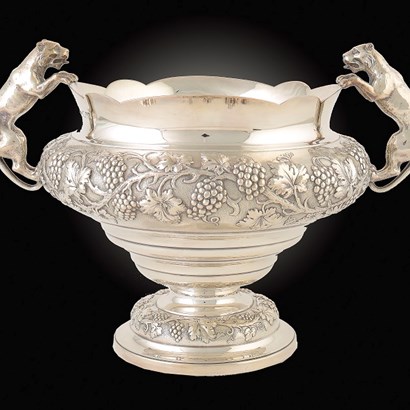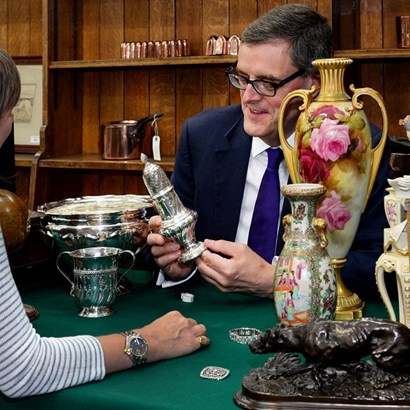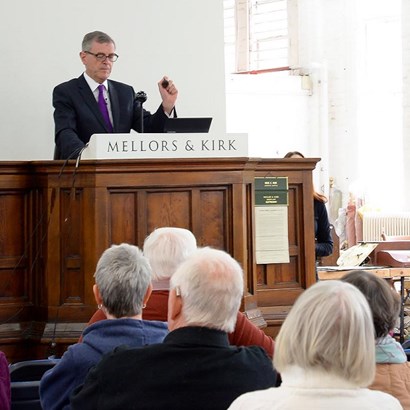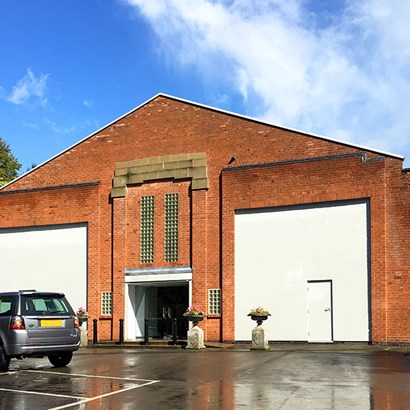Auction Insights
People's Hall
This week, in complete contrast to the usual offering of fine or unusual art and antiques I am treating readers of Under the Hammer to something a little different. A ‘guided tour’ of one of Nottingham’s best kept secrets, one of its finest 18th century interiors in a serious of rooms where time has stood still.
With an exterior one architectural historian has described as “austere” the People’s Hall in Heathcoat Street has an air of mystery about it tinged with faded glory, as if it had ‘slept’ for 200 years, whilst the Victorian buildings of the Lace Market – temples to commerce and a flourishing industry –sprang up nearby. In those days Heathcoat Street was called by its original name, Beck Lane.
The People’s Hall was originally known as Morley House and was built in 1750 for Ann Morley. The Morleys were potters who had made the famous Nottingham brown stoneware since the 1680s and had been making tiles for many years before that. Their Pottery nearby in Carter Gate and at The Beck Barns. They also made glass which is where Glasshouse Street gets its name. Anne’s husband Charles, who died at the young age of 39 was described as “an opulent potter in this town.” Building such a large, iconic house was surely the widowed Anne’s way of making a statement. She was an independent, strong and successful businesswoman, something most unusual for a woman at that period.
One of the many mysteries about the People’s Hall is who built it. It has many similarities to the work of architect John Carr of York (1723-1807), as anyone who has visited Fairfax House in York will recognise. In Nottingham Carr built Colwick Hall and Nottingham Racecourse, but the Peoples Hall predates those. It is more likely to be the work of a skilled local architect-builder such as Samuel Stretton, but again the date does not quite ‘fit’. There are also several other theories.
Whoever the architect was it would have made an impressive sight in the still largely undeveloped area with its Georgian sash windows, flights of steps leading up to the door and a superb front garden, on which now stands the Broadway Cinema. At the front of this there were magnificent wrought iron gates and a railing screen complete with lead grotesques and graceful foliage. This still survives, relocated long ago to the neighbouring building, but is now in sadly poor condition.
Inside there is an eerie absence of sound and especially on a dull day one can easily imagine in the half light the sights, sounds and smells of the 18th century candlelit interiors, with Mrs Morley’s servants busying themselves upstairs and down. In fact, the senses can run wild because some rooms are painted in bizarre colours recalling when in the 20th century it was home to a snooker club, frequented by only a few, mainly elderly gentlemen.
Holes in the carpet where once stood half a dozen full sized snooker tables and the heavily smoke stained walls contrast with fantastic 18th century plaster work, panelling complete with dado rails, doors and, best of all, the magnificent original carved chimneypieces which are miraculously still in situ.
The staircase with its Cuban mahogany handrail features three balusters to each tread, a hallmark of quality. Half way up there is a bizarre but genuine Art Nouveau leaded glass window of about 1910. Oddly enough it doesn’t seem too incongruous in this grand old house where nothing can be taken for granted.
The rooms on the first floor are equally impressive and like those below on the north side were greatly extended in 1854 by local philanthropist George Gill (1778-1855) A year or two before he had founded the People’s College. His idea of a Library to help working men better themselves was a noble one. At the time Gill bought the “interesting mansion” it had recently been the home of the School of Art. It was one of the earliest in the country, being founded in 1846. The upper room of Gill’s Library has a stage at one end and retains extraordinary iron ventilators rather like ship’s funnels which are still in working order. The elaborate ceiling rose of this period is identical to the example in the former HSBC Bank (and now Delilah Fine Foods) in Victoria Street. A marble tablet to Gill’s memory greets visitors in the Entrance Hall.
The second floor was the servant’s domain reached via the ‘backstairs’ or a much simpler brown stained twisting main staircase. A 20th century caretaker once decided to cut a flap for his cat in one of the plain 18th century two panel doors! But even that, wrong though it was, is evidence of an historic building actually being used, which they should be if at all possible for nothing better ensures their preservation.
In one small bedroom there is an amazing sight and, I think very rare, cast iron hob grate brilliantly designed as the famous Iron Bridge over the River Severn in Shropshire. The bridge was built by Abraham Darby II and was opened on New Year’s Day 1781. The grate was made only a year or two later to commemorate it, the first bridge to be built of iron in the world and a miracle of civil engineering.
What else can this noble mansion reveal? Accessed from an evocative rear passage, still in its late Victorian peeling brown paint and complete with a row of long unused iron coat hooks, is the Cellar door.
At the foot of the Cellar stairs you can turn left or right into four large rooms, but round a corner is a long flight of brick steps beneath a vaulted ceiling. Dodging the glistening head- height cobwebs one descends, turning through two right angles and, by now fairly deep underground you arrive in a large triple chambered cave system. It is still possible to see the marks of the workman’s tools in the sandstone, as if they had only recently left. What went on there may be revealed by a dig, but it is possible that one would have been used for malting barley. Home brewed beer was a staple when 18th century well water, especially in towns, was often polluted.
The building is in surprisingly good condition, watertight and dry, so in a very significant way the last 150 years of benign neglect have helped preserve this sleeping beauty. I hope that when a Prince Charming appears these fragile, beautiful rooms may again be used and enjoyed by the people of Nottingham, which would be a fitting tribute to George Gill’s memory.
The People’s Hall is privately owned and not open to the public.
< Back to Auction Insights



